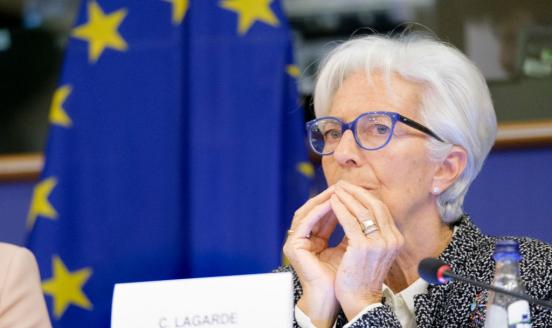Central banks: uncertainty is the problem, not managing the trilemma
Regaining price stability is difficult but doable; the bigger problem facing central banks is economic uncertainty.

While headline inflation in the euro area is moving in the right direction, core inflation remains stubbornly high, close to 6%. Unemployment is historically low, but growth prospects are mixed. Financial stability is considered at risk, especially because of possible tensions around Italian bond yields. In this context, the International Monetary Fund in April summarised a recurrent narrative, writing that Europe must strike a balance between “sustaining the recovery, defeating inflation and safeguarding financial stability”.
In handling this trilemma, much of the focus is on central bank policies. Measures taken by central banks are considered critical for the economies in which they work. The importance of the trilemma and of central bank policies should not be underestimated, but both issues should be put in context.
Central banks must of course find the right balance between competing objectives. The primary objective of price stability does not mean they can forget about financial stability and the risk of bearing down too hard on economic activity. But this balancing act is the essence of central banking, and conditions could easily be more difficult than they are now.
The current situation is not one of stagflation, which would create an acute dilemma between fighting inflation or the recession: unemployment is very low and economic activity prospects are uncertain but not unequivocally negative. Financial stability must be preserved, but so far the situation is not worrying, in terms either of stress in the financial system, or of the spreads between the yields of peripheral and core countries. The European Central Bank can dedicate itself to the objective of regaining price stability with the reasonable expectation that it can do so without causing financial instability or too much damage to economic activity and employment.
The assessment that central bank policies are of critical importance also needs qualification. Only for inflation is central bank action decisive. The possible fragmentation of global trade and production, poor demographics, immigration tensions, climate risks and geopolitical developments and crises, are graver problems to be dealt with and solutions to them will be achievable, if at all, only over the longer term. In any case, it is not central banks that have the primary responsibility for dealing with these longer-term problems.
The fact that the ECB and the Fed have been able to maintain their focus on inflation and could thus further increase rates confirms the reading that possible damages to economic activity and unemployment, as well as risks to financial stability, have to be considered but are not overwhelming. This attitude reinforces the market view that central banks are serious about bringing inflation back towards 2%, even if their success is far from assured.
Adding to a favourable reading, at least relative to the prevailing narrative, of the situation facing central banks is their reactivation of dollar swaps, complementing what they are doing domestically. Swaps allow central banks in selected economies to ‘print dollars’, in the sense that they can influence the Fed’s balance sheet, with the Fed’s consent of course. So, the tool is potent, and its mere existence can have beneficial effects, even if it is not used.
All this does not mean that there have not been problems in the policy response of central banks to the latest crises. The main issue for central banks is part of a more general problem: under the pressure of events, the public sector is taking an ever-larger role in shielding private participants from economic hardships.
With the global financial crisis, COVID-19 and Russia’s invasion of Ukraine, this was justified from a short-term perspective. But the medium and long-term negative consequences must be controlled. A difficult balance must be maintained between providing immediate help while minimising its moral hazard consequences. Relatedly, the bank resolution framework created after the Great Financial Crisis – envisaging bailing in of private investors – is proving difficult to implement. It is unclear whether the answer is better implementation of the bailing-in solution or a return to the old bail-out approach. The former may be preferable, but practical difficulties dog its implementation.
In conclusion, the task of central banks is difficult, but the balancing act between regaining price stability while avoiding financial instability and excessive damage to economic activity and employment could be more demanding – as it has been in the past. The real difficulty currently is economic uncertainty. Fundamental economic relationships, such as that between unemployment and inflation, have become muddier, making decisions much more difficult to take. This, rather than dealing with the trilemma, is the most difficult challenge.



